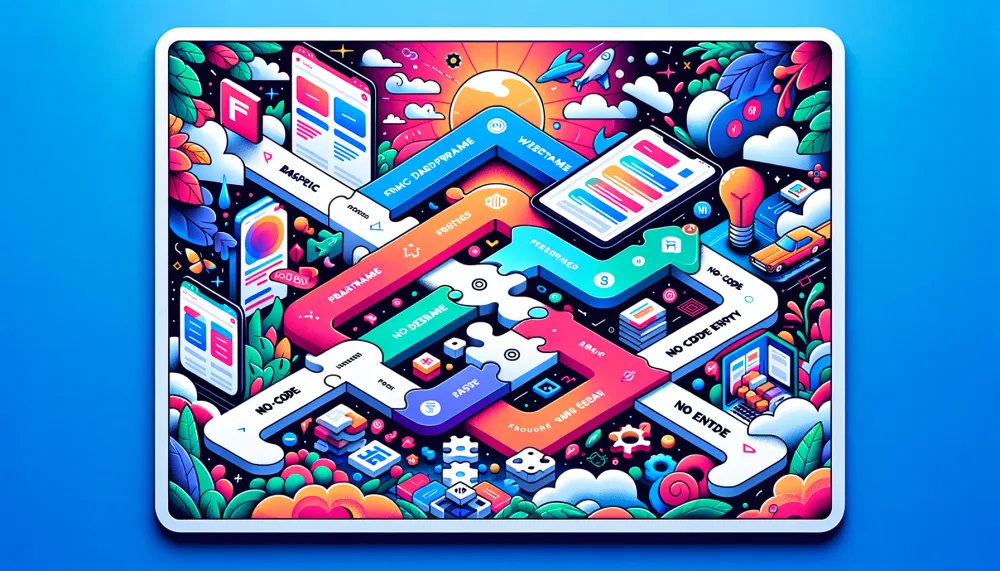What is Proactive Assistance with AI in design?
Ever wished for a personal assistant who not only knows what you need but also anticipates your needs even before you do? Well, that's what proactive assistance in user experience (UX) design is all about! It's like having a crystal ball that sees a step ahead, tackling challenges before they even pop up.
Note: Below are the links to other articles from this series:
This approach is a game-changer. It's a shift from the traditional reactive design, which waits for issues to pop up before dealing with them. Proactive UX design is more than just a quick fix. It's about seeing the bigger picture, understanding the broader challenges users face, and delivering solutions that contribute to the overall success of a product or an organization.
But here's the thing: transitioning from a reactive to a proactive design approach isn't a piece of cake. It needs a deep understanding of users, their needs, and behaviors. It's about suggesting new directions for products and providing more guidance to the product team.
Despite these challenges, the value of proactive UX design is massive. It leads to better user experiences, influences product decisions, and ultimately contributes to the success of your product.
In the following sections, we'll dive deeper into how AI supercharges proactive assistance, how it predicts user needs, and how it enhances the user experience with proactive tools. We'll also look at some real-world examples of proactive assistance.
So, are you ready to embark on this exciting journey of exploring the world of proactive assistance in UX design? Let's go!
Predicting Users' Needs with AI
Artificial Intelligence (AI) has the potential to revolutionize the way we predict user needs. But here's the catch: the effectiveness of AI in this area is often limited by the difficulty users have in articulating exactly what they want. This is where AI can step in to help users clarify their goals and make more informed decisions.
According to the People + AI Guidebook by Google, the secret sauce to predicting user needs lies in finding the intersection of user needs and AI strengths. The guidebook suggests that AI should be used to solve real problems where it can add unique value. This involves identifying user problems that are good candidates for AI and defining success. For instance, AI can automate tasks that are difficult or unpleasant, or where there's a need for scale. It can also augment tasks that people enjoy doing, that carry social capital, or where people don’t agree on the “correct” way to do it.
An article by the Finnish Center for Artificial Intelligence (FCAI) discusses how modeling user intent could revolutionize what we can do with AI. The article explains that AI has enormous promise for our future, but its usefulness is often limited because it cannot understand the intentions of technology users. FCAI researchers are developing solutions to this problem by developing AI that helps uncertain users formulate goals. The AI provides users with alternative choices and shows them the outcomes of those choices, thereby helping the users select appropriate next steps.
In conclusion, predicting user needs with AI involves understanding the user's intentions and providing them with choices that help them clarify their goals. This approach can fundamentally change how we develop and use AI, opening up tremendous potential for its application in various fields.
Enhancing User Experience with Proactive Tools
Proactive tools are like superheroes in the world of user experiences. They offer a way to anticipate user needs and provide solutions even before they become problems.
Take SessionStack, for example. It offers digital experience insights for product teams. It automatically captures events to provide retroactive analysis, leaving no blind spots in decision-making. By tracking every predicted and unpredicted user behavior, product teams can understand which behaviors drive growth. SessionStack also offers 100% Session Capture and pixel-perfect Session Replay, providing an accurate visualization of user onboarding and adoption. This helps reveal areas of confusion and decrease bug reproduction time, thereby enhancing user adoption.
Another approach to driving user adoption is through context-driven product experiences. As explained in this article by Yazan Sehwail, context-driven product experiences are interactions that happen inside your product that are triggered by a certain user behavior. This means reacting to the user, for example, triggering a hint or a tip when a user clicks on a certain element, or spends a certain amount of time on the page. This dynamic product experience layer sits on top of your product’s UI, and is dynamic enough to change based on specific scenarios.
Context-driven experiences and insightful analytics significantly enhance user experience by driving user adoption and providing valuable insights for product teams.
Real-World Examples of Proactive Assistance
The concept of proactive assistance is not just a theoretical construct. It's already being implemented in various digital products, enhancing user experiences and streamlining processes. Let's explore some real-world examples that leverage AI for proactive assistance.
Elf Help
Elf Help is an AI-powered platform that offers proactive self-help tools. It anticipates user needs and provides personalized recommendations, ensuring users get the help they need when they need it.
SiteGuide
SiteGuide is another AI-driven platform that offers 24/7 user support. It proactively anticipates user queries and provides instant responses, enhancing the overall user experience and ensuring users find what they're looking for swiftly and efficiently.
SAIL by North Creative
SAIL by North Creative is a free AI tool designed to spark creativity. It proactively generates video ideas based on user inputs, helping users bypass the brainstorming process and jump straight into creating engaging content.
Yuma - ChatGPT for Customer Support
Yuma leverages OpenAI's ChatGPT to provide proactive customer support. It anticipates customer queries and provides instant responses, enhancing the customer experience by providing quick and accurate answers.
Woebot Health
Woebot Health is a mental health platform that uses AI to provide proactive assistance. It anticipates user needs and provides personalized mental health support, helping users manage their mental health proactively.
These examples demonstrate the transformative potential of AI in enhancing user experiences through proactive assistance. They underscore the importance of clear communication between designers and AI tools and highlight the need to strike a balance between autonomy and assistance to preserve human agency while reaping the benefits of AI efficiency.
This is just he beginning
Seeing how it's all about anticipating and meeting user needs before they even know they have them, makes it hard to believe we are here already.
We've seen how AI is playing a crucial role in this, with examples like Elf Help, SiteGuide, SAIL by North Creative, Yuma, and Woebot Health showing us what's possible.
But hold on, we're not done yet!
Next up, we're going to explore "Immersive Interactions - AI Enhanced Design." Making your digital experiences feel as natural and intuitive as having a conversation with a friend. That's the promise of immersive interactions, and AI is the key to making it happen.




